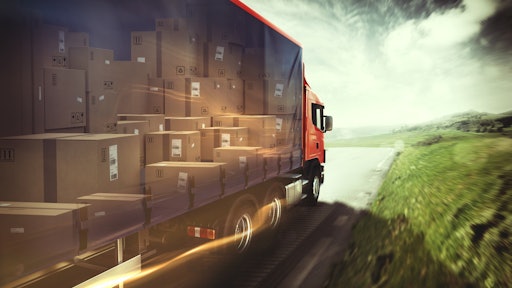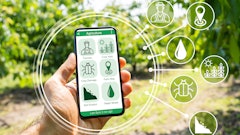
From enhancing visibility, building resiliency and mitigating risk to leveraging smart technologies and automated software, a digital supply chain means different things to different companies.
Yet, digitization itself presents the same benefits across the board in moving temperature-controlled foods in a safe and efficient manner.
Marina Mayer, Editor-in-Chief of Food Logistics and Supply & Demand Chain Executive, talks exclusively with Ron Lee, chief product and marketing officer, 3G, about how the real hurdle to going digital is achieving true connectivity.
CLICK HERE to read the article in full.
Food Logistics: What is a digital supply chain? What does it mean for you/the cold food chain?
Ron Lee: My team knows that I emphasize moving quickly and prioritizing data. That captures the essence of a “digital supply chain.” With system interoperability and integration, the data flow is practically immediate, and nobody has to wait for information to take action. When information moves faster, the goods can follow suit.
For perishable foods, like those in cold storage, this swiftness is critical. They spend less time in transit and more time available for consumption, reducing waste. And, of course, this digital approach offers a bonus: traceability. The digital supply chain isolates issues; if there's ever a need for a recall, we can swiftly pinpoint the exact lots in question.
Food Logistics: Describe some technologies and solutions defining the future of digital supply chains.
Lee: At the core, we have the “big” systems, those for managing the movement and storage of goods. Depending on their shipping needs and business intricacies, manufacturers, distributors, and retailers typically rely on transportation management systems (TMS) or shipping software. Logistics providers mainly use TMS, but shipping software could easily integrate. Other systems might include WMS or ERP. Additionally, novel point solutions now focus on aspects like track & trace, carrier onboarding, pricing intelligence, and retail compliance.
Food Logistics: Where to start? How do companies start the journey toward a more digital supply chain? Outline some good first steps.
Lee: First and foremost, every business requires a primary or “big” system to manage the movement of goods. Whether it integrates with the most sophisticated ERP or basic accounting software, this system is pivotal for the execution, tracking, and analysis of goods’ movements. It’s fundamental because it touches the entire supply chain. In fact, connecting to specific supply chain solutions, like shipping or transportation, could be a prerequisite for selecting many other systems. It’s also risky to cobble together disconnected solutions; choosing ones you know integrate or are part of a common product suite is more beneficial.
During implementation, involve functional leaders to discuss configuration. The more configurable a system, the more critical this stage. Particularly in industries with specific nuances, such as food production, the expertise of these functional experts ensures the system is set up for success.
Lastly, this initiative shouldn’t be limited to those who use the technology the most. Digital transformations can overwhelm many employees if they feel blindsided by the new processes. Ensure the transition is a genuine team effort.
Food Logistics: What sectors (i.e., agriculture, frozen foods, etc.) are more impacted/affected by digitalization than others and why?
Lee: All sectors experience the influence of digitalization, but the impact varies based on production and distribution stages. My expertise in transportation reveals that items that are time-sensitive or perishable are most affected because the risks associated with delays are highest.
For instance, perishable goods can spoil if they are in transit too long or aren’t stored properly. Similarly, when delayed in transit, commodities like flour disrupt the production of baked goods, keeping them off of store shelves.
In foodservice and storage, the rapid distribution of essential components, such as refrigerator parts accelerated by supply chain digitization, is crucial for food transportation storage.
CLICK HERE to read the "Breaking Down the Digital Supply Chain" article in full.
Food Logistics: From food production to the retail and/or foodservice outlet, how does a digital supply chain transform the way food is moved from Point A to Point B? This could also entail fleet, warehousing etc.
Lee: Digitization offers increased speed and precision, which is crucial for goods with limited shelf life. By improving transportation through digitization, perishables can spend less time in transit, extending their time on the shelf or in someone’s refrigerator. The less time in transit, the fewer opportunities for something to go wrong, like a truck’s refrigeration system going down.
Transportation planning and optimization are hypercritical when food safety is at stake. Digitization plays a role in everything from the most basic planning (transportation mode, carrier, and equipment selection) to sophisticated optimization for load movement in the least time. They also monitor in-transit goods, detect temperature fluctuations and potential delays, and allow for lot number tracking in case of an issue with a particular lot. People demand transparency and trust in what they sell and consume. Digital tools have become indispensable for maintaining confidence.
Food Logistics: Describe some other trends and challenges with regards to digital supply chains.
Lee: Honestly, I think the whole industry suffers a bit from buzzword-itis. The term “digital” often feels overused, leading to a certain degree of ambiguity. While many solutions promise to “digitize” the supply chain, there is confusion when trying to understand what it really means.
Digitization of information – the data – is only part of the story. The real hurdle is in digital execution – the true connectivity. There’s a ton of data out there, but much remains unusable because of a lack of connectivity. The most significant challenge in supply chains is creating, managing, and maintaining the channels through which data flows between systems. I’ve always advocated for a dual approach: develop modular systems with that connectivity built in and prioritize strengthening the links between systems that require constant communication.
Another misconception is that digital solutions are “plug-and-play” or “set it and forget it.” On the contrary, maintaining connectivity, which makes it all work, takes consistent work.
Finally, there is the matter of terminology. In the software industry, we must acknowledge that customers interpret terms differently. Software’s value isn’t based on its makers' definition but on how it fulfills a customer’s needs. Those of us creating and selling software must better understand and adapt to customer expectations.
Food Logistics: What are some things not addressed above that may be pertinent to our readers?
Lee: Supply chain digitization can be a very confusing topic—clarity in your goals is essential. When you can articulate specific objectives, you can identify someone who can help you link digital technologies to your goals and demonstrate their applicability. This may be a vendor, a consultant, a partner, or someone else. Moreover, it’s important to recognize that the root cause of a particular problem may lie somewhere unclear along the chain. For instance, “too much expired inventory” might stem from demand prediction errors, extended transit times, or inconsistent carrier performance. Sometimes, a problem that appears in one place may originate from another. Knowing where digital interventions are most needed to speed the movement of inventory or information can make a significant difference.
CLICK HERE to read the article in full.


























